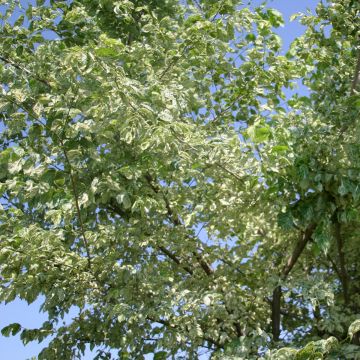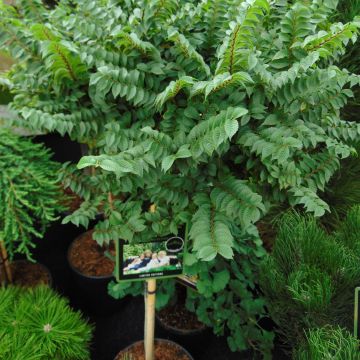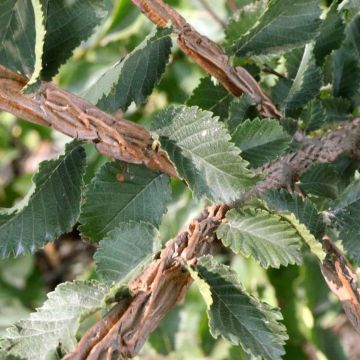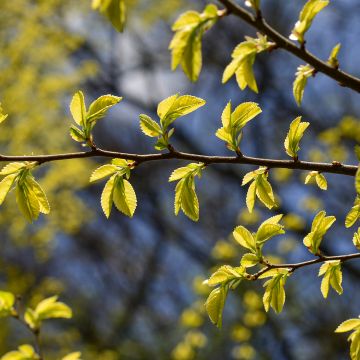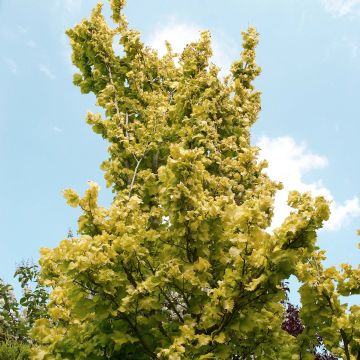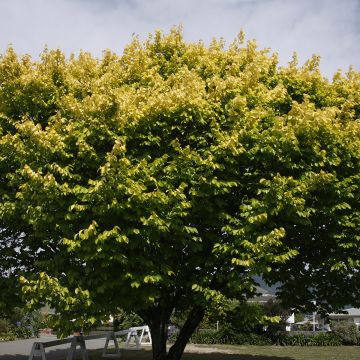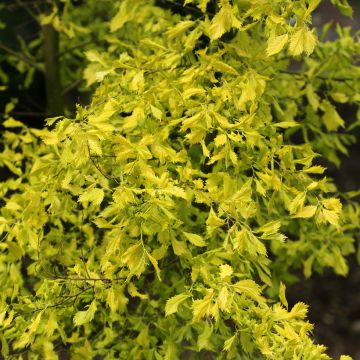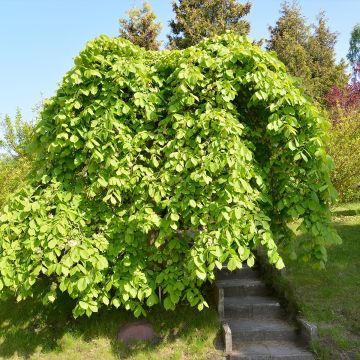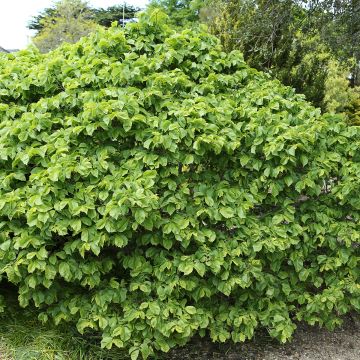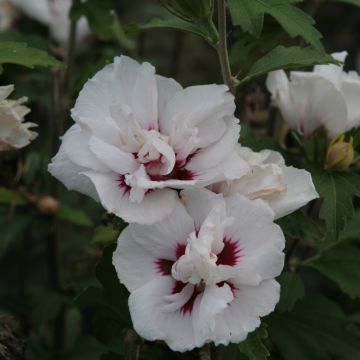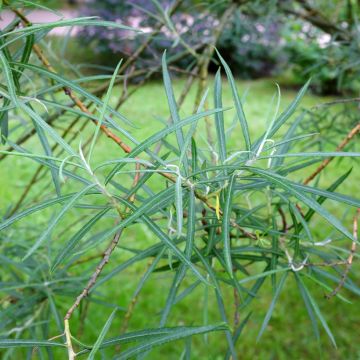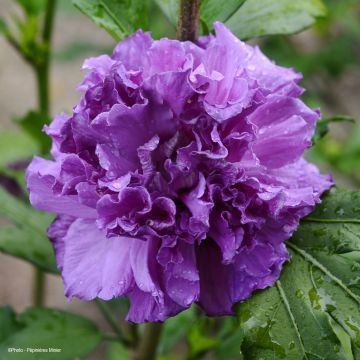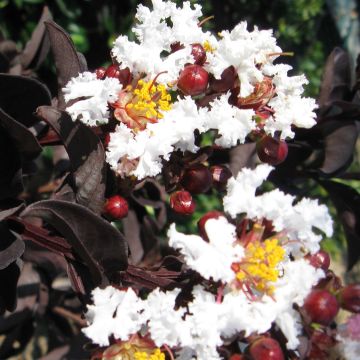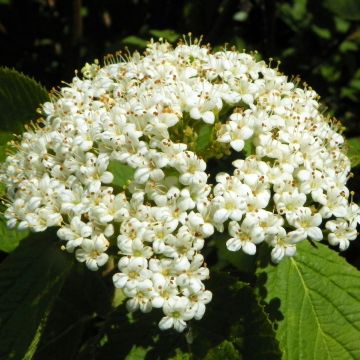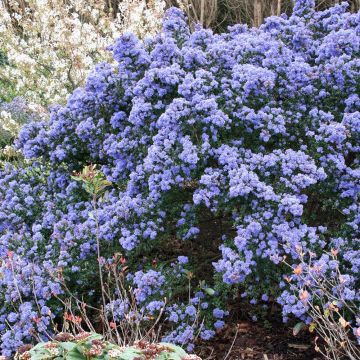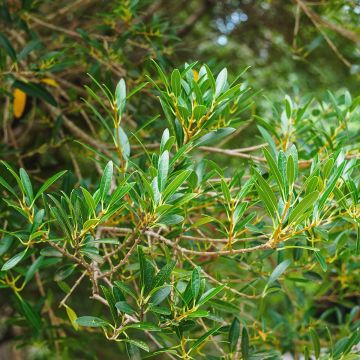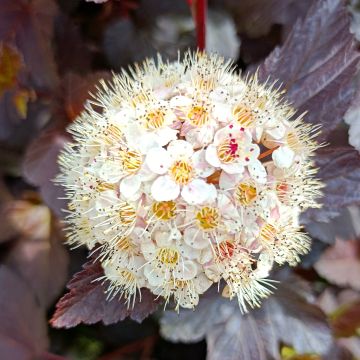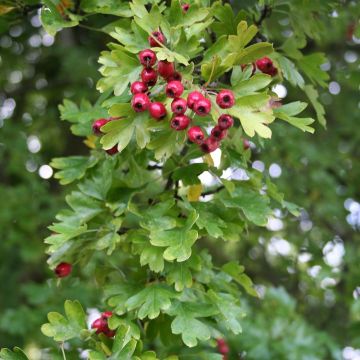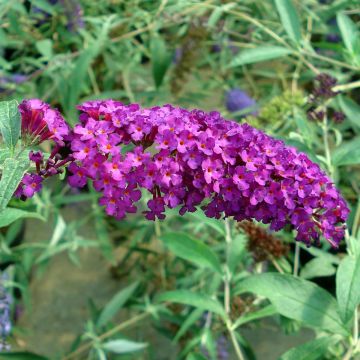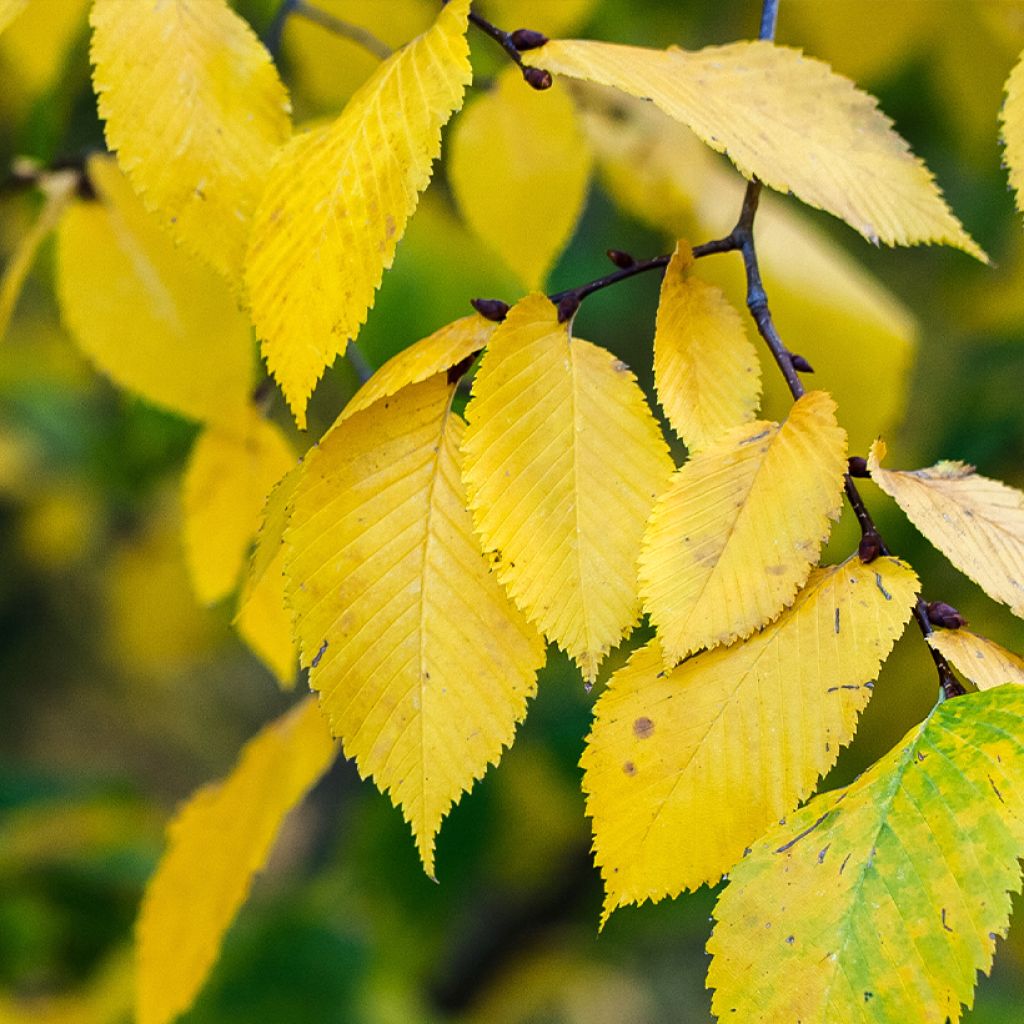

Ulmus pumila Beijing Gold - Elm
Ulmus pumila Beijing Gold - Elm
Ulmus pumila Beijing Gold
Siberian Elm, Asiatic Elm, Dwarf Elm
Why not try an alternative variety in stock?
View all →This plant carries a 24 months recovery warranty
More information
We guarantee the quality of our plants for a full growing cycle, and will replace at our expense any plant that fails to recover under normal climatic and planting conditions.
From €5.90 for pickup delivery and €6.90 for home delivery
Express home delivery from €8.90.
Does this plant fit my garden?
Set up your Plantfit profile →
Description
The Ulmus pumila 'Beijing Gold' is a dwarf variety of Siberian Elm with remarkable golden yellow foliage from spring to autumn. It is a slow-growing deciduous tree that tolerates pruning very well and is often used for low hedges or topiaries. Very hardy, this elm tolerates limestone, urban pollution, and drought episodes. It is rather resistant to Dutch elm disease but can occasionally be attacked by insects.
Ulmus pumila belongs to the Ulmaceae family, like our Hackberry (Celtis) or the Zelkova (false Siberian Elm), with which it should not be confused. It is native to Asia, from eastern Siberia to Korea, passing through Mongolia and northern China. It was introduced to the United States in the early 20th century to combat wind erosion and has since become naturalised there. In its countries of origin, it can reach a height of 25 m (82ft), form a trunk with a diameter of 1 m (3ft), and live up to 150 years.
The 'Beijing Gold' Siberian Elm, formerly known as Ulmus pumila 'Aurea', is a horticultural selection from the Chinese nursery Honze introduced to the market shortly before 2008. Slow-growing, it has a more or less spreading oval habit. At age 10, it reaches about 2.50 m (8ft) in height. Ultimately, this small tree reaches between 3 and 4 m (10 and 13ft) in height and 2 to 3 m (7 to 10ft) in spread if not pruned. The grey bark punctuated here and there with white patches is not devoid of interest, although not truly decorative. The deciduous foliage appears in spring and falls in autumn. The leaves are small (2 to 5 cm (1 to 2in) long), slightly asymmetrical, and somewhat dentate along the edges. Their colour is a beautiful bright yellow if the tree receives enough sunlight. In shade, the yellow tends to turn green, especially in summer. This elm blooms in March-April. The flowers are petal-less and appear on the previous year's branches. They are green in colour, without ornamental value, and can be destroyed by a late frost. Due to its geographical origins, the tree is extremely hardy, tolerating temperatures as low as -35°C (1°F). The fruits are dry, brown samaras containing a central seed. They are produced abundantly.
The Ulmus pumila 'Beijing Gold' is used for hedges, shrub borders, or topiaries in small urban gardens. In summer, its golden foliage forms a beautiful contrast with the purple foliage of Berberis ottawensis 'Superba', Cercis canadensis 'Ruby Falls', or Cotinus coggygria 'Dusky Maiden', for example. Create beautiful autumn scenes by pairing them with 'Red Cascade' European Spindle, 'Miracle' Dogwood, and White Pavier.
Report an error about the product description
Plant habit
Flowering
Foliage
Botanical data
Ulmus
pumila
Beijing Gold
Ulmaceae
Siberian Elm, Asiatic Elm, Dwarf Elm
Cultivar or hybrid
Other Ulmus - Elm
Planting and care
The Ulmus pumila 'Beijing Gold' is planted in autumn or spring in ordinary soil, even limestone, but properly drained. While it grows faster in moist soil, it adapts well to drier lands. It does not appreciate clay soils soaked with water in winter. Install it in a sunny location, as it needs a lot of light. It adapts to all our climates, tolerating drought as well as severe cold. It also tolerates urban pollution and de-icing salt, which is well-suited for city plantings. Water and mulch in the early summers, prune the first years in winter to balance its branches, and then remove dead wood.
In the 70s, an epidemic of Dutch elm disease severely reduced the population of elms in Europe. Following this event, a monitoring program was implemented. The disease is a fungus called Dutch elm disease (cryptogamic disease = disease caused by a fungus) transmitted by a beetle called the elm bark beetle. The first symptoms appear on a branch of the canopy and are characterized by wilting and curling of the leaves during the growing season. Ulmus pumila is the most resistant species to Dutch elm disease, but it can be attacked by other insects and diseases such as powdery mildew and canker.
Planting period
Intended location
Care
This item has not been reviewed yet - be the first to leave a review about it.
Hedge shrubs
Haven't found what you were looking for?
Hardiness is the lowest winter temperature a plant can endure without suffering serious damage or even dying. However, hardiness is affected by location (a sheltered area, such as a patio), protection (winter cover) and soil type (hardiness is improved by well-drained soil).

Photo Sharing Terms & Conditions
In order to encourage gardeners to interact and share their experiences, Promesse de fleurs offers various media enabling content to be uploaded onto its Site - in particular via the ‘Photo sharing’ module.
The User agrees to refrain from:
- Posting any content that is illegal, prejudicial, insulting, racist, inciteful to hatred, revisionist, contrary to public decency, that infringes on privacy or on the privacy rights of third parties, in particular the publicity rights of persons and goods, intellectual property rights, or the right to privacy.
- Submitting content on behalf of a third party;
- Impersonate the identity of a third party and/or publish any personal information about a third party;
In general, the User undertakes to refrain from any unethical behaviour.
All Content (in particular text, comments, files, images, photos, videos, creative works, etc.), which may be subject to property or intellectual property rights, image or other private rights, shall remain the property of the User, subject to the limited rights granted by the terms of the licence granted by Promesse de fleurs as stated below. Users are at liberty to publish or not to publish such Content on the Site, notably via the ‘Photo Sharing’ facility, and accept that this Content shall be made public and freely accessible, notably on the Internet.
Users further acknowledge, undertake to have ,and guarantee that they hold all necessary rights and permissions to publish such material on the Site, in particular with regard to the legislation in force pertaining to any privacy, property, intellectual property, image, or contractual rights, or rights of any other nature. By publishing such Content on the Site, Users acknowledge accepting full liability as publishers of the Content within the meaning of the law, and grant Promesse de fleurs, free of charge, an inclusive, worldwide licence for the said Content for the entire duration of its publication, including all reproduction, representation, up/downloading, displaying, performing, transmission, and storage rights.
Users also grant permission for their name to be linked to the Content and accept that this link may not always be made available.
By engaging in posting material, Users consent to their Content becoming automatically accessible on the Internet, in particular on other sites and/or blogs and/or web pages of the Promesse de fleurs site, including in particular social pages and the Promesse de fleurs catalogue.
Users may secure the removal of entrusted content free of charge by issuing a simple request via our contact form.
The flowering period indicated on our website applies to countries and regions located in USDA zone 8 (France, the United Kingdom, Ireland, the Netherlands, etc.)
It will vary according to where you live:
- In zones 9 to 10 (Italy, Spain, Greece, etc.), flowering will occur about 2 to 4 weeks earlier.
- In zones 6 to 7 (Germany, Poland, Slovenia, and lower mountainous regions), flowering will be delayed by 2 to 3 weeks.
- In zone 5 (Central Europe, Scandinavia), blooming will be delayed by 3 to 5 weeks.
In temperate climates, pruning of spring-flowering shrubs (forsythia, spireas, etc.) should be done just after flowering.
Pruning of summer-flowering shrubs (Indian Lilac, Perovskia, etc.) can be done in winter or spring.
In cold regions as well as with frost-sensitive plants, avoid pruning too early when severe frosts may still occur.
The planting period indicated on our website applies to countries and regions located in USDA zone 8 (France, United Kingdom, Ireland, Netherlands).
It will vary according to where you live:
- In Mediterranean zones (Marseille, Madrid, Milan, etc.), autumn and winter are the best planting periods.
- In continental zones (Strasbourg, Munich, Vienna, etc.), delay planting by 2 to 3 weeks in spring and bring it forward by 2 to 4 weeks in autumn.
- In mountainous regions (the Alps, Pyrenees, Carpathians, etc.), it is best to plant in late spring (May-June) or late summer (August-September).
The harvesting period indicated on our website applies to countries and regions in USDA zone 8 (France, England, Ireland, the Netherlands).
In colder areas (Scandinavia, Poland, Austria...) fruit and vegetable harvests are likely to be delayed by 3-4 weeks.
In warmer areas (Italy, Spain, Greece, etc.), harvesting will probably take place earlier, depending on weather conditions.
The sowing periods indicated on our website apply to countries and regions within USDA Zone 8 (France, UK, Ireland, Netherlands).
In colder areas (Scandinavia, Poland, Austria...), delay any outdoor sowing by 3-4 weeks, or sow under glass.
In warmer climes (Italy, Spain, Greece, etc.), bring outdoor sowing forward by a few weeks.

































